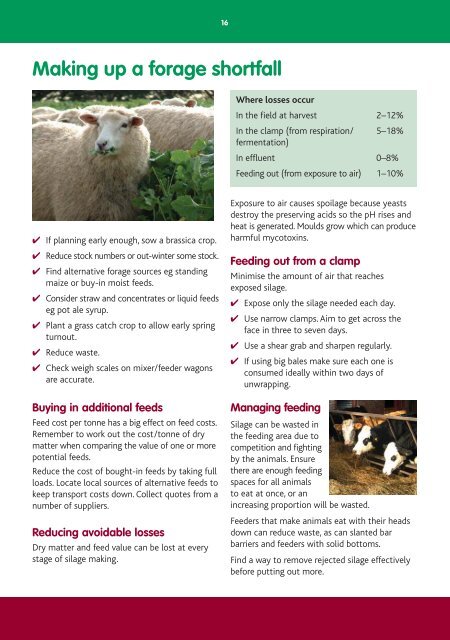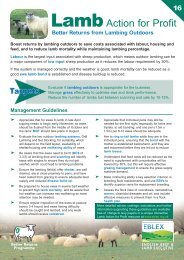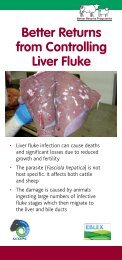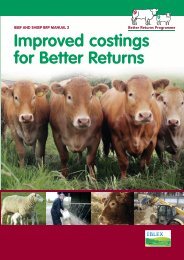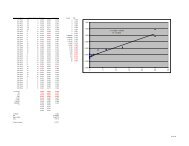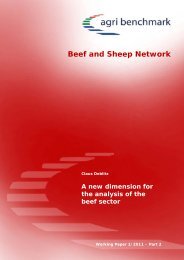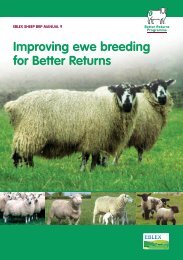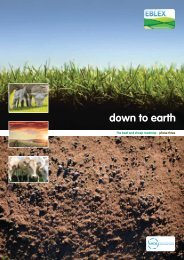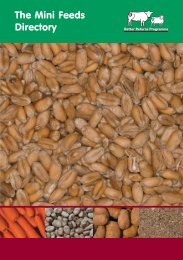Making Grass Silage for Better Returns - Eblex
Making Grass Silage for Better Returns - Eblex
Making Grass Silage for Better Returns - Eblex
You also want an ePaper? Increase the reach of your titles
YUMPU automatically turns print PDFs into web optimized ePapers that Google loves.
<strong>Making</strong> up a <strong>for</strong>age shortfall<br />
✔ If planning early enough, sow a brassica crop.<br />
✔ Reduce stock numbers or out-winter some stock.<br />
✔ Find alternative <strong>for</strong>age sources eg standing<br />
maize or buy-in moist feeds.<br />
✔ Consider straw and concentrates or liquid feeds<br />
eg pot ale syrup.<br />
✔ Plant a grass catch crop to allow early spring<br />
turnout.<br />
✔ Reduce waste.<br />
✔ Check weigh scales on mixer/feeder wagons<br />
are accurate.<br />
Buying in additional feeds<br />
Feed cost per tonne has a big effect on feed costs.<br />
Remember to work out the cost/tonne of dry<br />
matter when comparing the value of one or more<br />
potential feeds.<br />
Reduce the cost of bought-in feeds by taking full<br />
loads. Locate local sources of alternative feeds to<br />
keep transport costs down. Collect quotes from a<br />
number of suppliers.<br />
Reducing avoidable losses<br />
Dry matter and feed value can be lost at every<br />
stage of silage making.<br />
16<br />
Where losses occur<br />
In the field at harvest 2–12%<br />
In the clamp (from respiration/<br />
fermentation)<br />
5–18%<br />
In effluent 0–8%<br />
Feeding out (from exposure to air) 1–10%<br />
Exposure to air causes spoilage because yeasts<br />
destroy the preserving acids so the pH rises and<br />
heat is generated. Moulds grow which can produce<br />
harmful mycotoxins.<br />
Feeding out from a clamp<br />
Minimise the amount of air that reaches<br />
exposed silage.<br />
✔ Expose only the silage needed each day.<br />
✔ Use narrow clamps. Aim to get across the<br />
face in three to seven days.<br />
✔ Use a shear grab and sharpen regularly.<br />
✔ If using big bales make sure each one is<br />
consumed ideally within two days of<br />
unwrapping.<br />
Managing feeding<br />
<strong>Silage</strong> can be wasted in<br />
the feeding area due to<br />
competition and fighting<br />
by the animals. Ensure<br />
there are enough feeding<br />
spaces <strong>for</strong> all animals<br />
to eat at once, or an<br />
increasing proportion will be wasted.<br />
Feeders that make animals eat with their heads<br />
down can reduce waste, as can slanted bar<br />
barriers and feeders with solid bottoms.<br />
Find a way to remove rejected silage effectively<br />
be<strong>for</strong>e putting out more.


